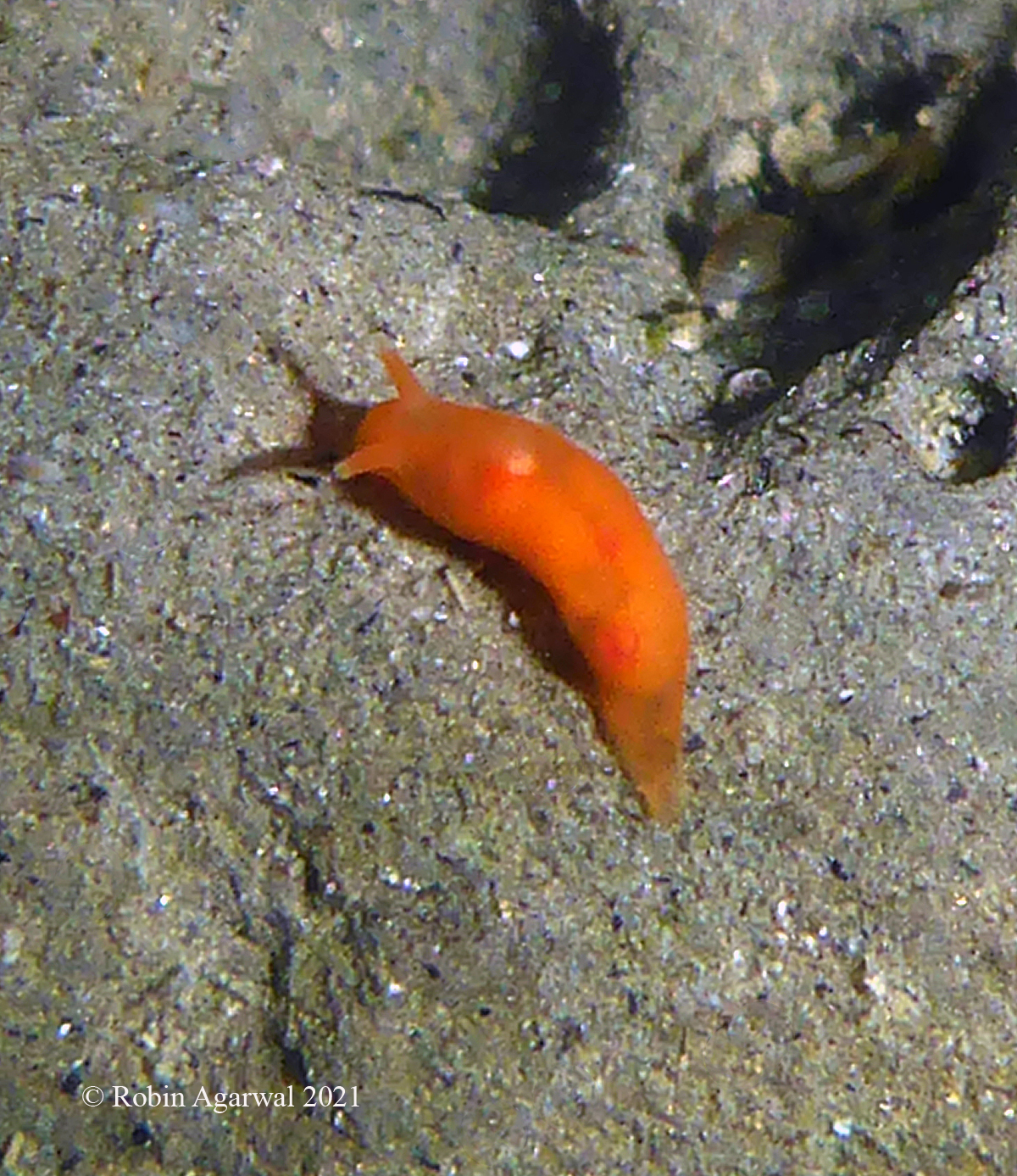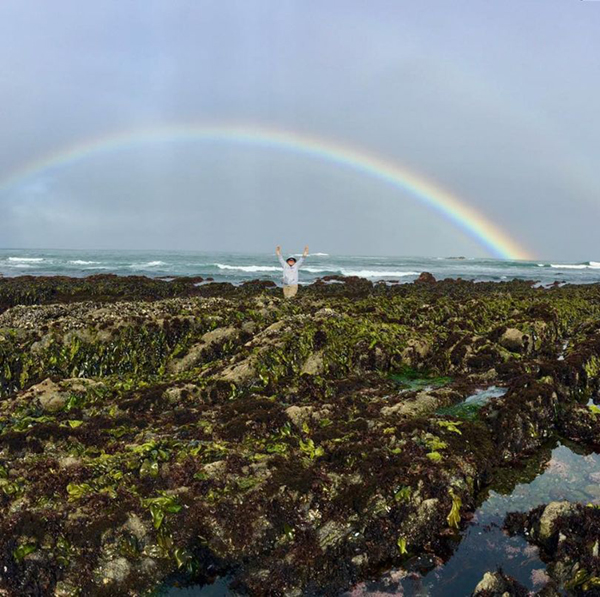 |
Vayssierae felis
Image courtesy of Robin AgarwalPhoto by Robin Agarwal
San Diego, California
 | Vayssierae felis (Collingwood, 1881) Why is it that the most of us have never seen the most common, most abundant, sea slug on most of our coast lines? And to make it worse - for most Branchers this species has one of the most fascinating natural histories of any of our more common slugs, and we have never seen it. Really - why is that? Well to start with - they are very small (less than 6 mm) and they occur intertidally, a part of the ocean only citizen scientists like Robin explore. When Collingwood described this unique species from the South China Sea, he thought be a juvenile Gymnodorid because he could not see a gill. No kidding - it doesn't have one. Oh Yes - it is now known worldwide. What might be the explanation for this? This tiny bright orange-red species of dorid nudibranch, often referred to vernacularly as the "Drilling Dorid" feeds on the polychaete worm, Spirobis, which is an abundant member of everyone of our intertidal coastlines. < The nudibranch has a unique boring radula accompanied by a chemical gland capable of dissolving the tube of the worm, teaming together they can of drill though the calcareous tube of the Spirobid worms, allowing the slug to suck out dinner. |
Sammamish, WA 98074
Sept., 2021
Send Dave email at davidwbehrens@gmail.com
Image courtesy of Robin Agarwal

I don't dive. And I don't own an unwieldy,expensive underwater camera rig. What I do is peer into tidepools and hang my head over the side of floating docks, hoping to spot a nudibranch and get a few snaps with the trusty little point-and-shoot, underwater macro camera that fits in my pocket. I was a tidepool kid who went astray and graduated with a liberal arts degree. In the last decade, I've returned to the tidepools and found a particular passion for photographing nudibranchs and other intertidal marine life. I'm co-editor of the California Sea Slugs Guide on iNaturalist.org, where I have posted about 4,000 geotagged observations of nudibranchs, mostly along the Central California coast. Since I offer all my photos free to non-profit organizations (my way of thanking them for the work they do), you can find them all over the internet as well as Bay Nature magazine and NOAA National Marine Sanctuary informational signage. I've also been an enthusiastic contributor to a few scientific papers on nudibranchs, such as Heterobranch Sea Slug Range Shifts in the Northeast Pacific Ocean Associated with the 2015-16 El Nino by Goddard et al. (2018). Cheers, Robin Agarwal
Send Robin email at robingwenagarwal@gmail.com |

|
